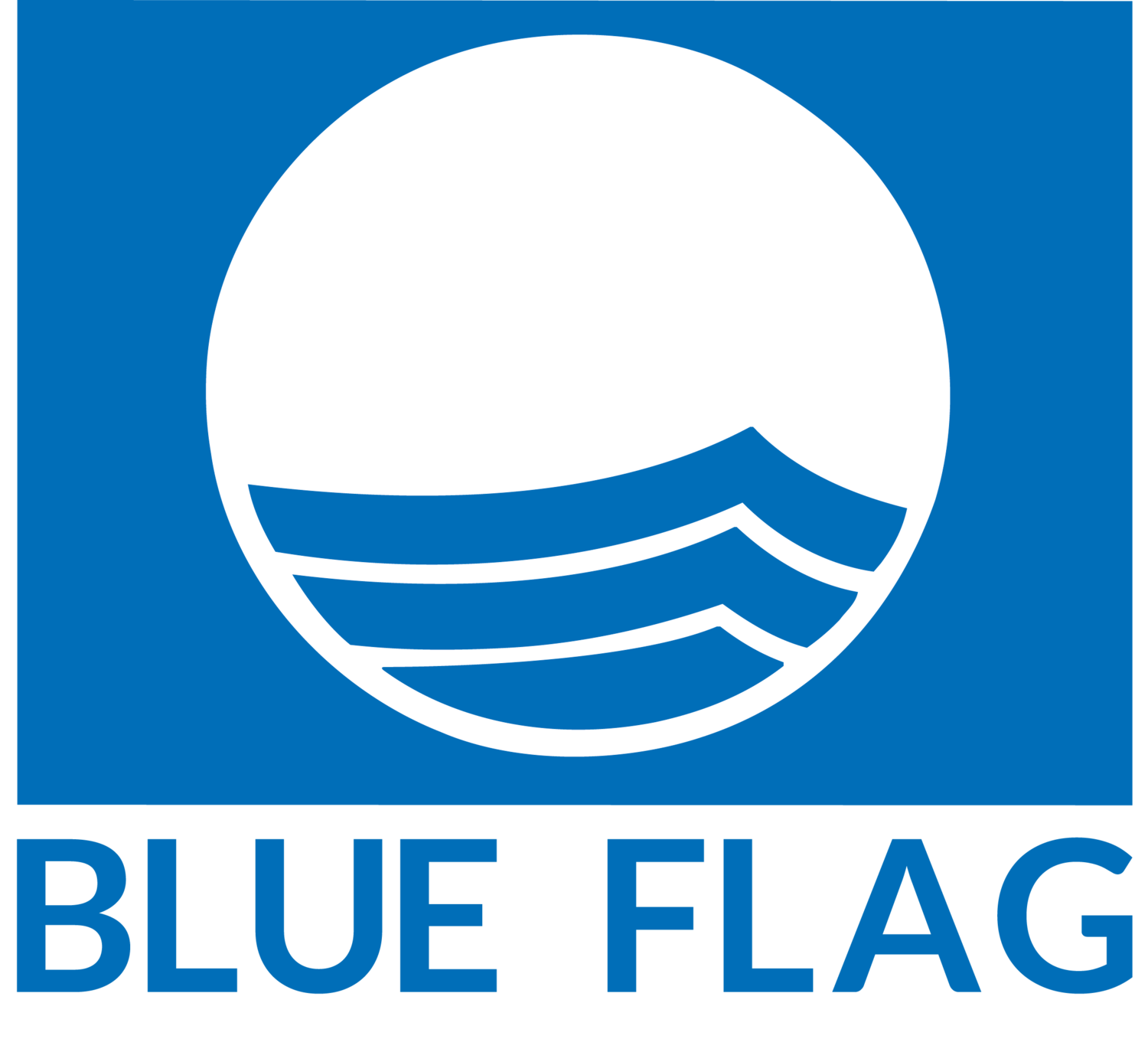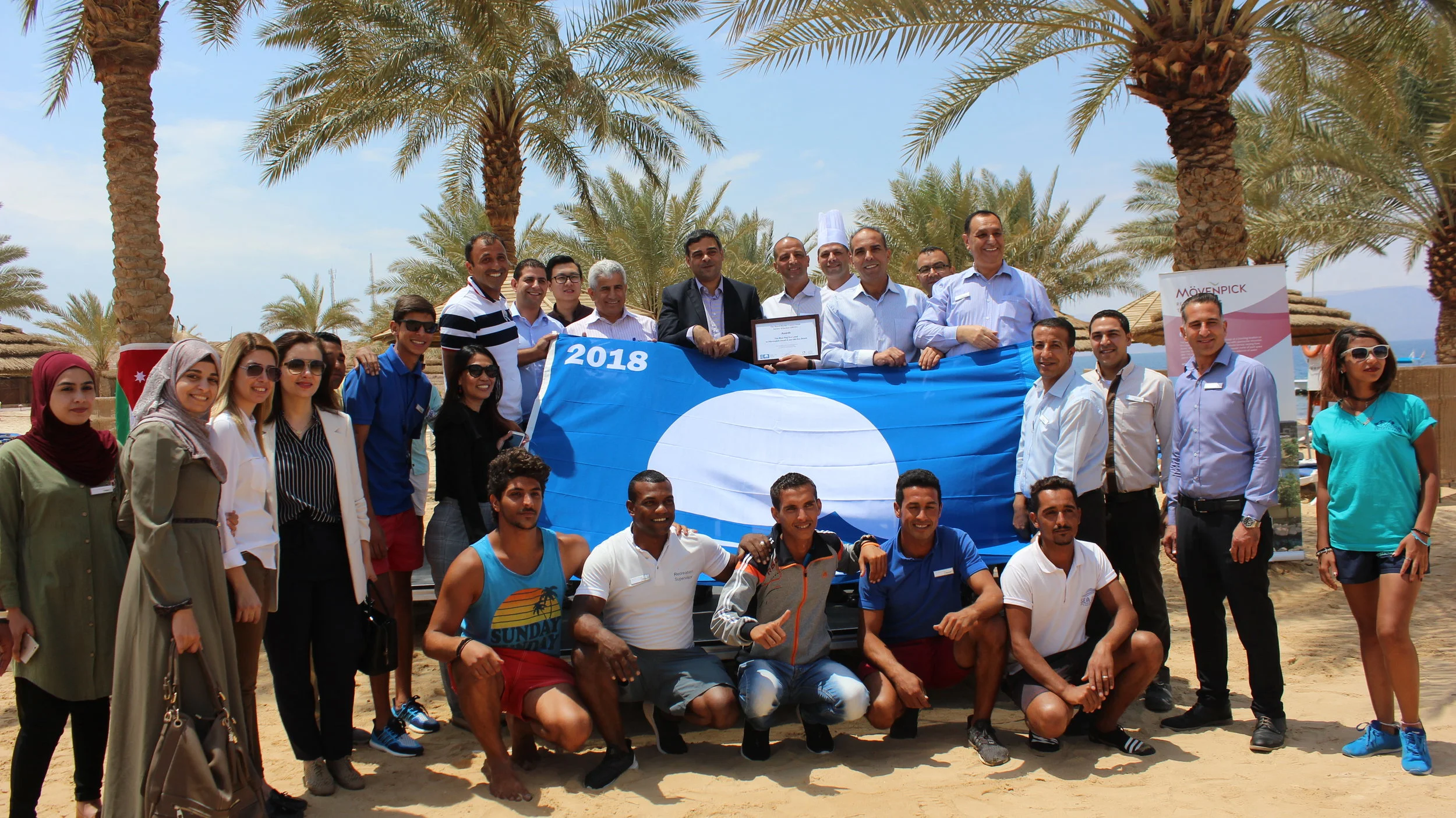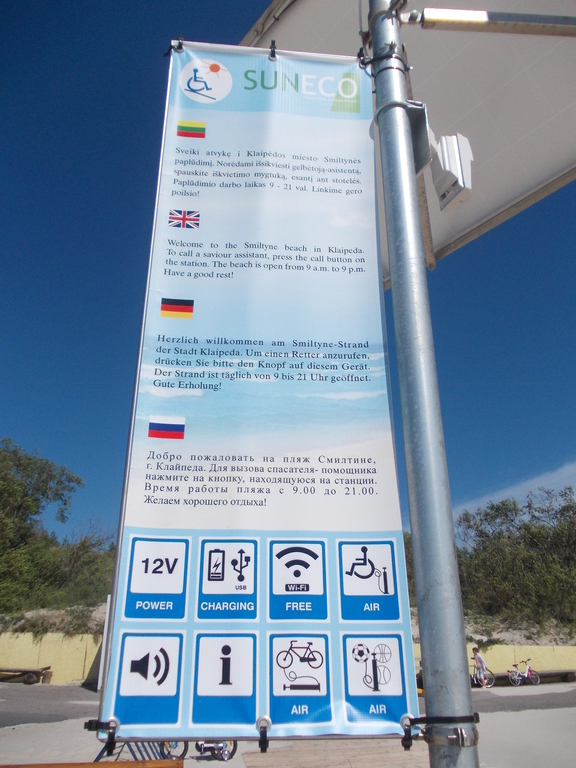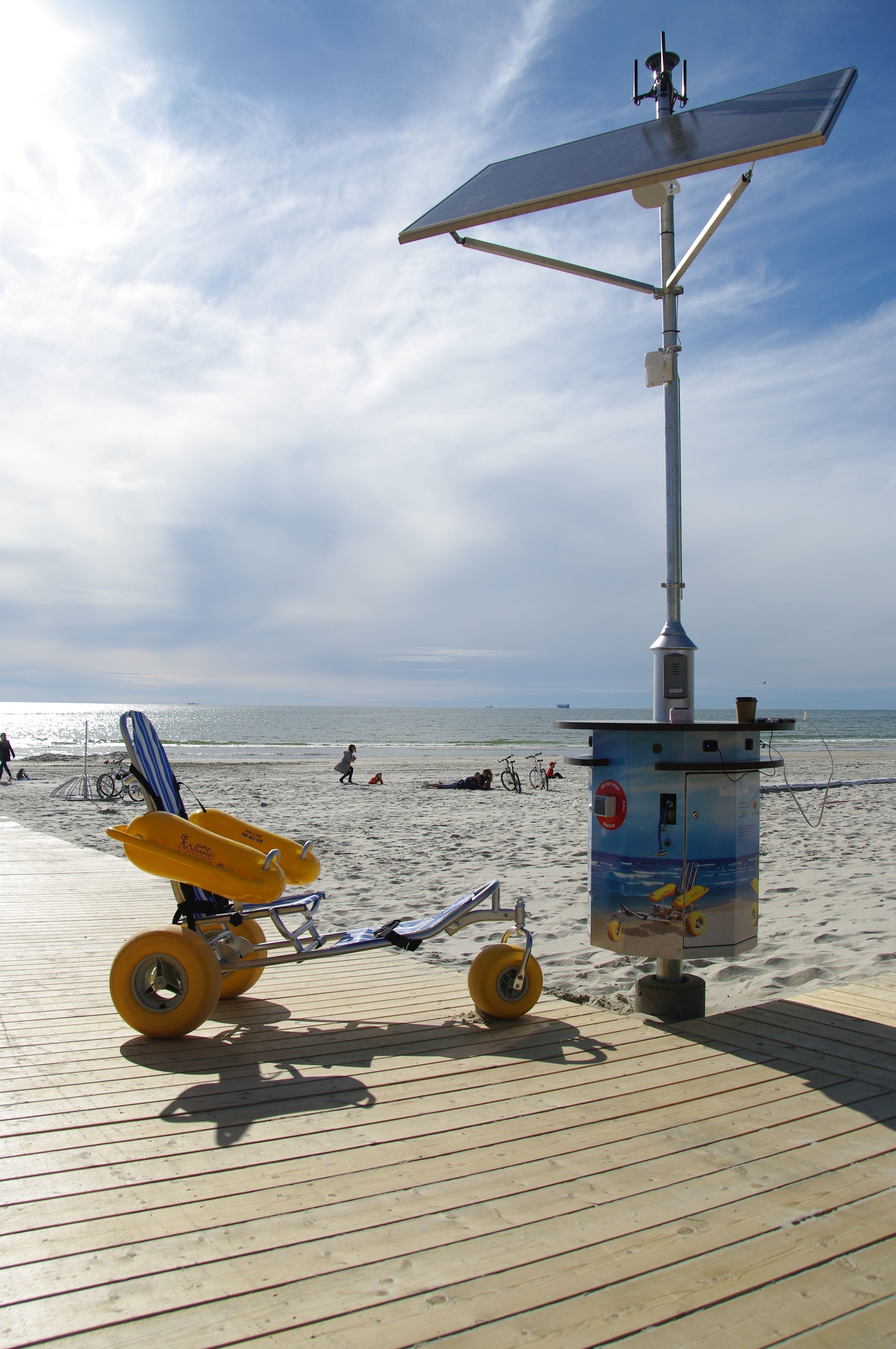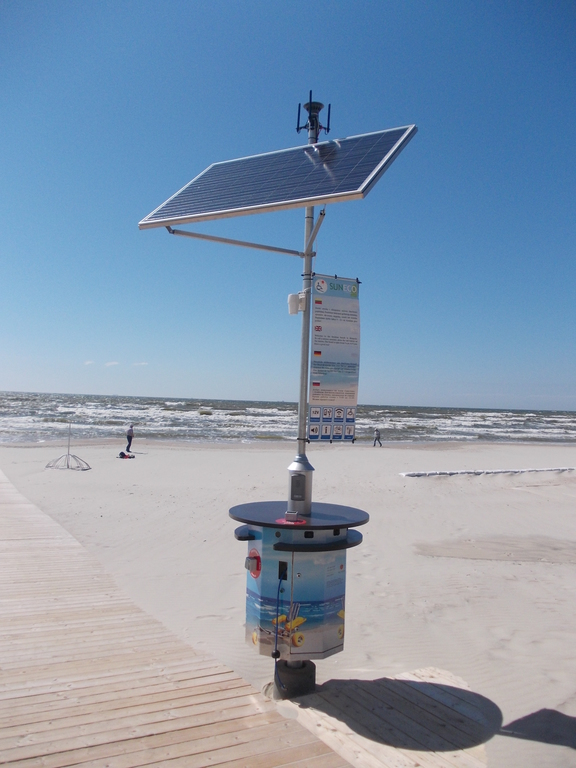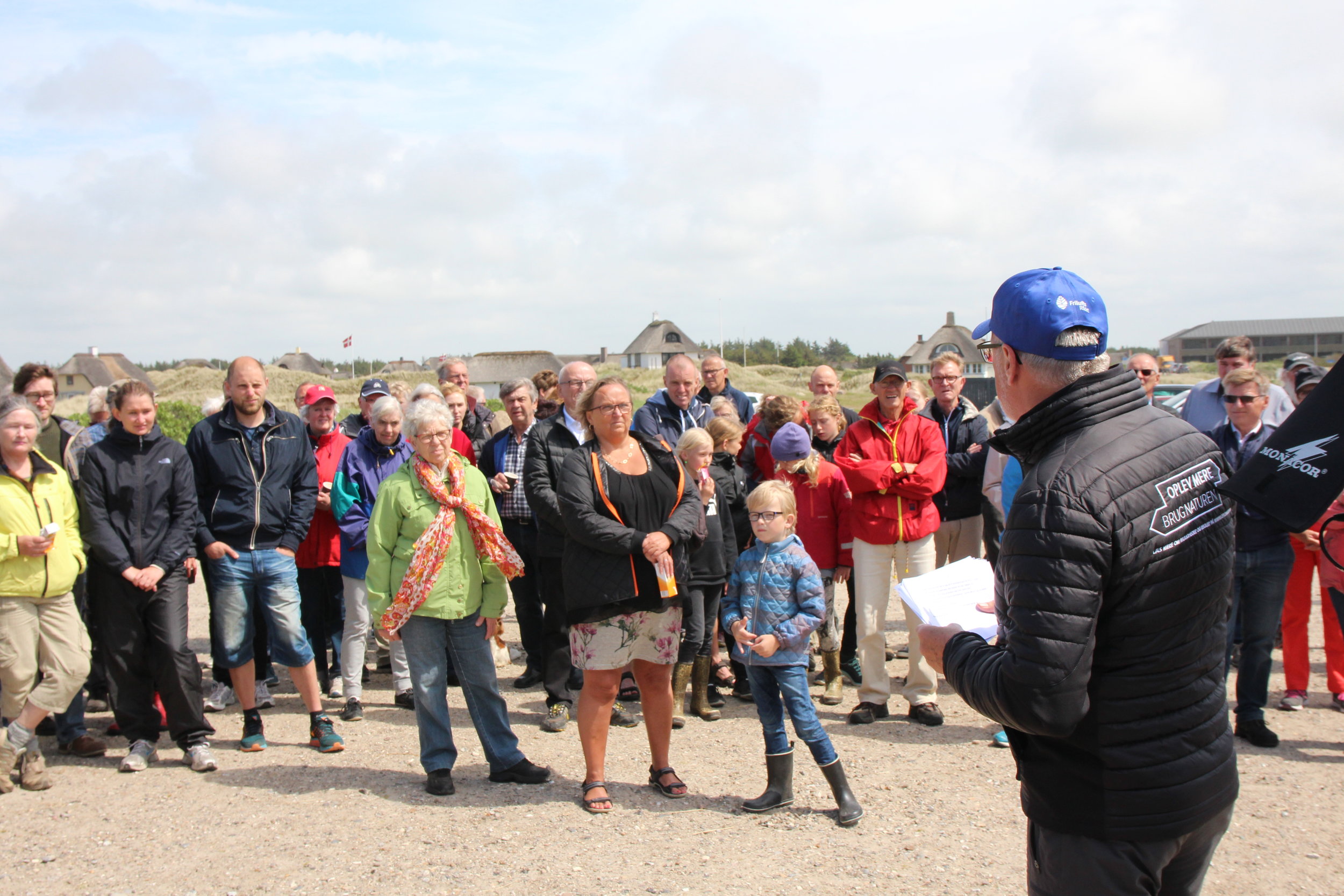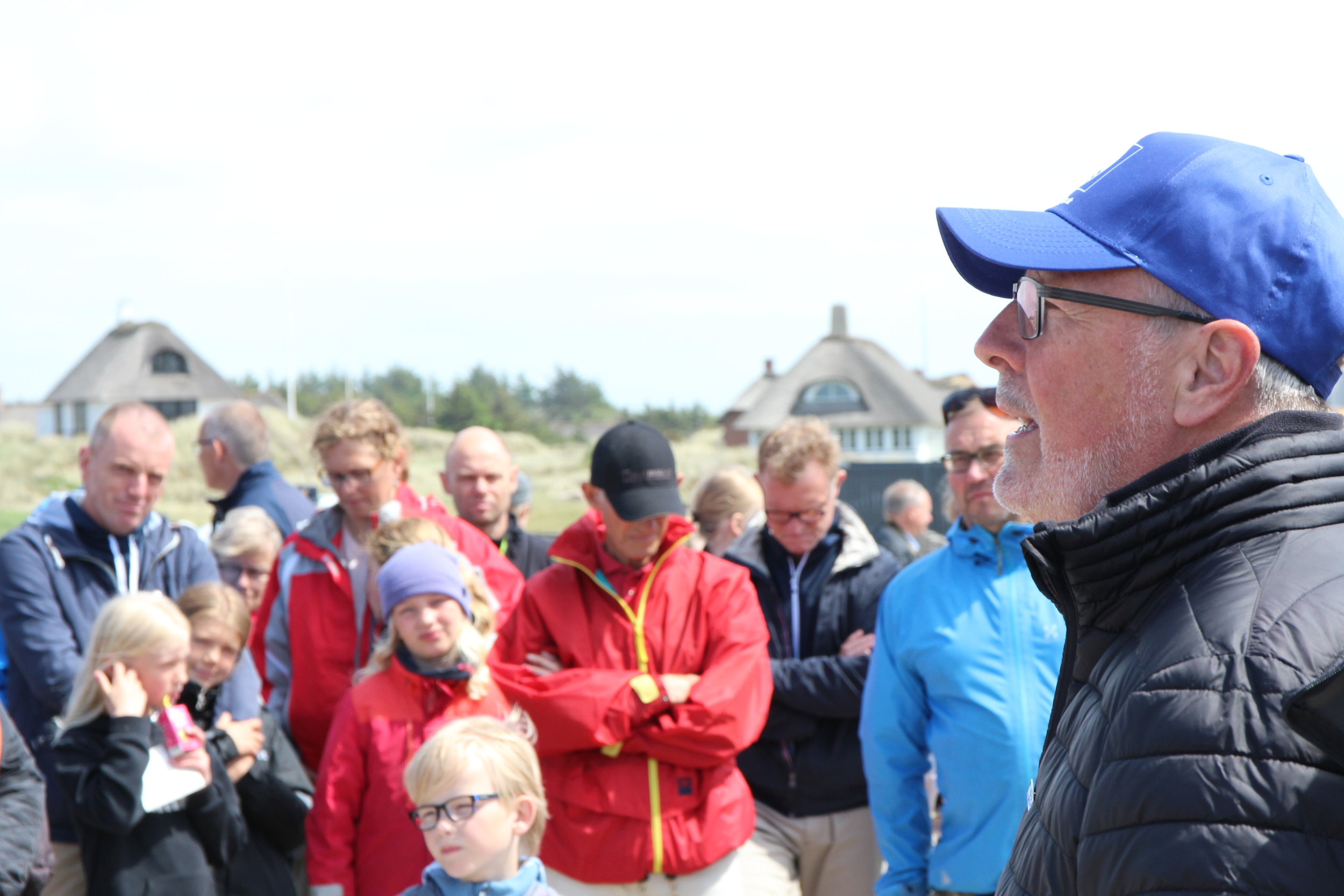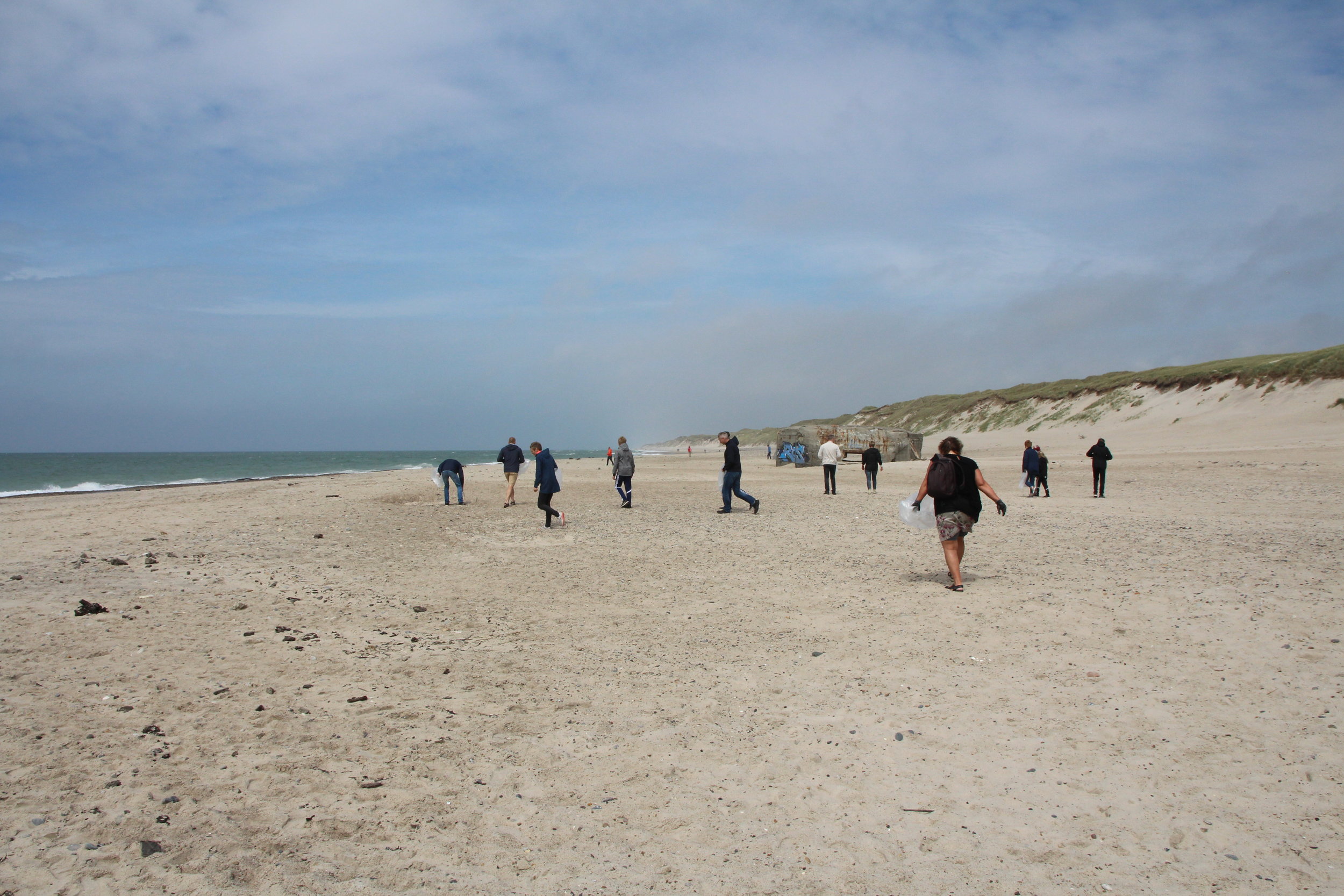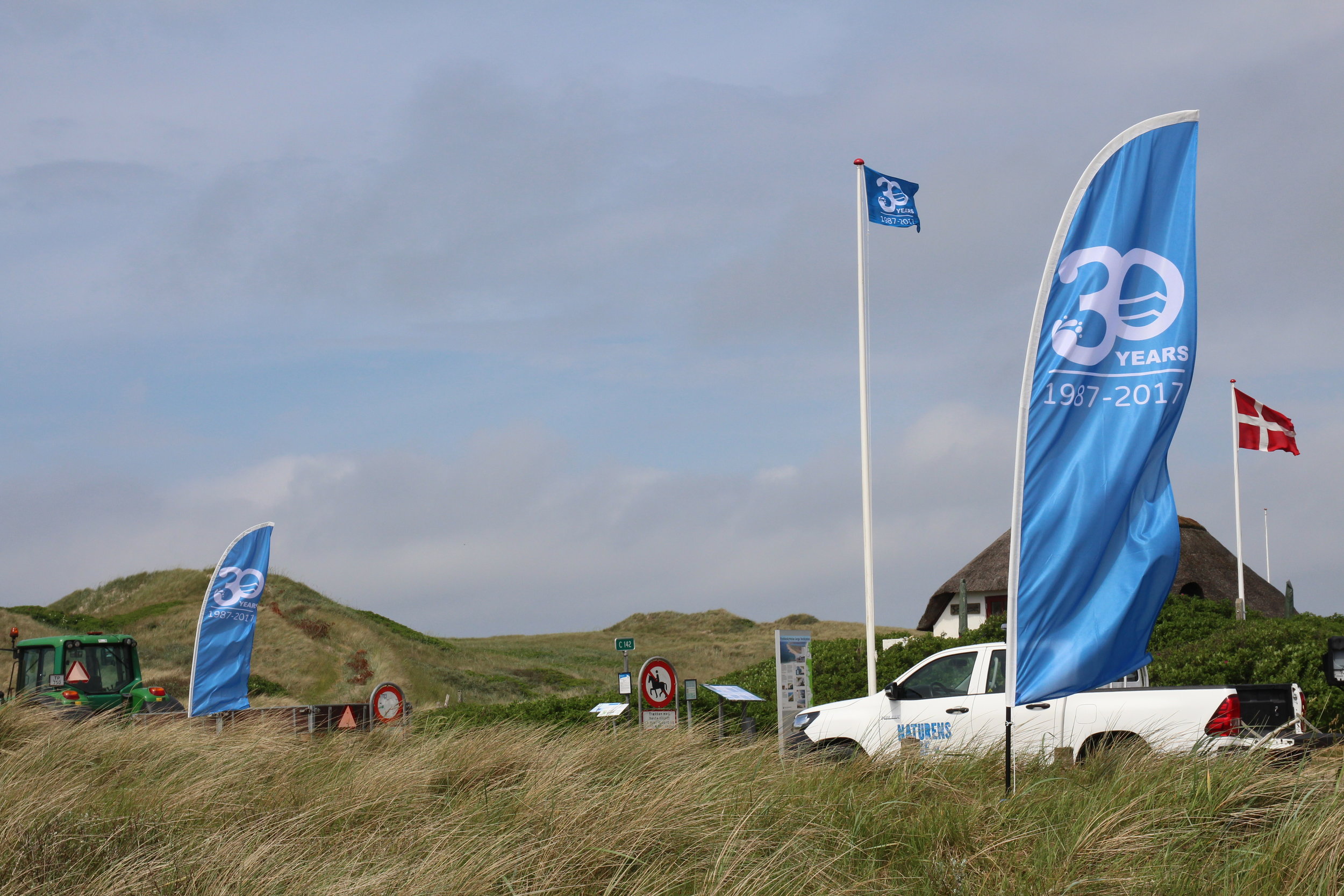With more than 570 awarded beaches, Spain is the county with the highest amount of Blue Flag awarded sites worldwide. Three of these beaches belong to the municipality of Palafrugell in Girona. Since 2011 they actively participate in the monitoring of nearby Posidonia meadows, leading to many positive developments for local marine species.
Blue Flag awarding ceremonies for 2018 season: Part 2
Blue Flag awarding ceremonies for 2018 season: Part 1
ITB Berlin 2018: Blue Flag presentation at the World’s Leading Tourism and Travel Trade Show
WESSA Donates Amphibious Wheelchairs to Four Blue Flag Beaches in South Africa
It's not just another day at the beach! On 26 February, South African Blue Flag National Operator WESSA held an event on Muizenberg beach in Cape Town to present amphibious wheelchairs to four municipal Blue Flag beaches in South Africa.
Blue Flag to Present at ITB Berlin 2018
Blue Flag in post-hurricane St. Maarten
Celebrating Blue Flag in South Africa
Blue Flag National Operator Meeting 2017
PRESS RELEASE: Climate Change and Rebuilding Sustainably
Support to the affected British Virgin Islands and US Virgin Islands after Hurricane Irma
In Puerto Rico, the Marina Puerto del Rey and the companies ‘Sea Ventures Pro Dive Center’, ‘East Island Excursions’ and ‘Bellaventura Inc,’ came together to establish a collection center for first aid kits, food, water, clothing and construction material to deliver to the affected population in these islands.
The Blue Flag: 30 years of Eco Guidance with the TransEurope Marinas
Environmental beach management for protection of bathers and species in Slovenia
The main beach in Portoroz, a small modern tourist resort close to the Adriatic pearl, the city of Piran, is a sandy beach with the Blue flag. And its sea bottom host very interesting species “Pinna nobilis”, common name the noble pen shell or fan mussel, a large marine bivalve mollusk in the family Pinnidae, the pen shells.
30 years of Blue Flag in The Netherlands
In 1987, 1 marina at the Wadden Island of Terschelling and the beaches of Noordwijk, Wadden Island Ameland, Veere and Westenschouwen received the first Blue Flag as the Blue Flag campaign started that year in The Netherlands.
Now, 30 years later, these locations have still Blue Flag, 30 years after each other. But the program increased in the Netherlands to 182 locations. 122 marina's, 8 inland beaches and 52 beaches at the Dutch North Sea coast.
At 18 May the municipality of The Hague hosted the 30st launch of Blue Flag in The Nehterlands. Al the Blue Flags from 1987 to 2017 waved at the pooles on the beach (thanks to the Blue Flag collegues of Portugal). A lot of school children helped to open the 2017 Blue Flag season by digging in the sand of the beach. They found the largest Blue Flag of the world and spread this big flag out over the beach.
The Blue Flag certificates were reached out to the beach and marina managers at the Olympic Top Sailing Centre at the Yachtclub Scheveningen.
30 years of the Blue Flag programme in Slovenia
"As we all know climate change is a new challenge that brings global tourism more risks than opportunities, predicts regional, seasonal and product redistribution of tourist flows. Consumer behaviour is changing rapidly; tourists are increasingly looking for green, responsible place. The Blue Flag is a promotional tool by which we can influence these decisions of consumers."
The Blue Flag Mediterranean week: Caring for the sea that unites us
Cross Mediterranean countries Blue Flag Beach cleanups week under the international "clean seas" to start between 3-10 July.
13 countries around the Mediterranean are involved in an international campaign for protecting the marine environment "The Blue Flag Mediterranean week".
In the first week of July, beach clean ups will be organized in order to raise awareness in the public for protecting the shore and the marine environment. The initiative started from the idea that environment have no boundaries and the litter that thrown in one side of the Mediterranean will easily reach the other side. The organizations joined the clean up under the slogan "Caring for the sea that unite us"
Stay up to date and check your social networks #BlueFlagMedWeek
"Sun Eco" service station in Lithuania
In the beginning of the bathing season an „Sun Eco" public service station was installed at the 1st Smiltyne beach (Klaipeda region). "Sun Eco“- is a multifunctional mobile device, which uses solar energy. The following facilities of the station are provided to the beach visitors:
* air compressor for pumping bikes tires and a fan to inflate water toys, water mattresses, game balls;
* charging facility for mobile devices as phones, computers, GPS devices;
* free Wi-Fi internet access;
* "Call“ button for disabled people, to invite a lifeguard for assistance.
"Sun Eco“ station can be adapted according to the season. The station can be used on the beaches, various popular touristic places, parks, for example, it can be installed during winter time as well, on a sledge on the frozen water pond. If climate conditions allow, station with wind power plant can be also used.
30 years of the Blue Flag programme in Denmark
The Danish Outdoor Council hoisted the first Blue Flags in Denmark in the year of 1987. A total of 19 beaches were awarded that year. Out of the 19 beaches, one beach has managed to hoist the Blue Flag for 30 consecutive years. The beach is called Vedersø Klit and is situated in a dune landscape at the Danish Westcoast in Ringkoebing-Skjern Municipality. Maintaining the Blue Flag standard for 30 consecutive years is an outstanding achievement that called for a celebration on site.
On June 5th The Danish Outdoor Council and Ringkoebing-Skjern municipality had a 30 year Blue Flag celebration on the beach with speaches from the chairman of the Danish Outdoor Council and the chairman of the environmental board of the municipality. The 30 year anniversary flag was hoisted to start the event. Two nature guides conducted different environmental educational activities through out the event and local outdoor organizations had information about coastal recreational activities. The Blue Flag was hoisted and saluted by 8 black powder cannons. The last part of the event consisted of liter picking on the beach with food and something to drink for the litter pickers after a job well done.
Vedersø Klit is also one of the pilot beaches that has tested the sea bin idea this winter, and the idea has worked really well. The municipality has now decided to implement seabins at all their beaches. Thanks to Netherlands and France for the inspiration!
PRESS RELEASE: Blue Flag and World Cetacean Alliance become official partners
25 years of whale watching in Iceland
A couple of months ago, WDC (Whale and Dolphin Conservation) was delighted to host a packed event commemorating 25 years of whale watching in Iceland. The event was held at the Whales of Iceland exhibition in Reykjavik’s Old Harbour area, where, surrounded by lifesize models of the 23 species of whale and dolphin found in Iceland’s waters, guests from Iceland’s whale watching, research, conservation and tourism communities were welcomed by Ásbjörn Björgvinsson, long-time friend of WDC and the man who had the vision and the belief to help pioneering the concept of whale watching in Icelandic waters, back in the 1990s. Ásbjörn recalled the ridicule that greeted him and others when the idea was first mooted, but those early discussions and occasional trips led to a seminal workshop in 1995, organized by WDC, that led to the explosive growth in whale watching that has continued to this day.
Erich Hoyt, WDC Research Fellow and head of WDC’s Homes for Whales campaign, who helped leading that early workshop, then took the floor. Erich reminded the audience that the high quality of whale watching in Iceland over the past couple of decades has delivered many benefits, including research and education about Icelandic whales that reaches, currently 272,000 people a year, according to IceWhale, Iceland’s whale watching association. Erich reported that, since 2010, Icelandic whale watching is believed to have grown faster than anywhere else in the world, a rate of 20% average annual growth rate. An astonishing 1 in 5 tourists to Iceland now go whale watching. Several areas of Iceland, including Husavik, Grundarfjordur and Akureyri in the North and Reykjavik’s Old Harbour have literally been transformed by whale watching and associated businesses. But with success, of course, comes responsibility. Erich outlined the challenges for the future and introduced the concept of securing marine protected areas or reserves to protect “the stars of the show” that the whales have clearly become, in the hearts and minds of a growing number of Icelanders.
Erich’s talk was followed by a lively panel discussion, led by Ásbjörn. Experts included Rannveig Grétarsdóttir of Elding/Whale Watching Akureyri; Magnús Kr. Guðmundsson of Special Tours, representing the whale watch community; Guðmundur Ingi Guðbrandsson of Landvernd, the Icelandic Environment Association; and University of Iceland researchers, Marianne Rasmussen and Edda Elísabet Magnúsdóttir. Erich’s suggestion for a “Great Barrier Reef” approach to branding tourism, protecting the whales and their habitats, and linking land and sea was endorsed and amplified by everyone on the panel.
The evening was rounded off by the presentation, by Landvernd’s Salome Hallfreðsdóttir, of Blue Flag awards to four qualifying whale watch companies: Ambassador, Elding, Special Tours and Whale Safari. This was, quite literally, a flagship event marking the first operators to be accredited under this scheme anywhere in the world!
The evening celebration brought together friends and colleagues working for whales and their conservation across Iceland and beyond. Best of all, the evening delivered firm support for ongoing collaborations to push forward the ideas and initiatives discussed during the evening. There was passion in the room - we all got the feeling that a touchpaper has been lit – our job now is to keep up the momentum!
Our thanks and appreciation to our hosts at the Whales of Iceland exhibition and to all our guests for being part of this wonderful, energetic movement.
